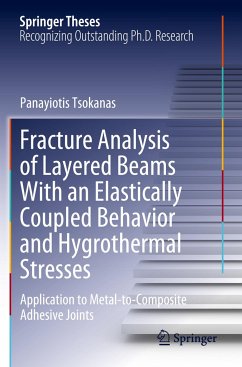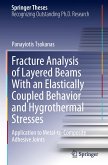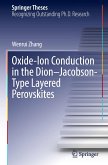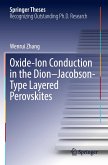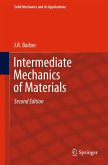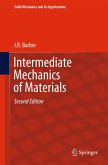This book presents an analytical framework for calculating the fracture toughness of generally layered beam structures with an elastically coupled response and hygrothermal stresses. The beam under study features several peculiarities: it consists of multiple layers of dissimilar materials, features bending-extension coupling, and contains residual hygrothermal stresses. Here, a generic analytical model is proposed to compute the energy release rate and the mode mixity. Mechanics of composite materials, crack closure integral, and energetic methods are among the theoretical tools employed for developing the model.
A wealth of new closed-form expressions is presented, together with their validation through finite element analyses, which enables investigating various material systems and testing configurations. Experimentalists will find directions for the design and interpretation of delamination tests on laminated composites with uncommon stacking sequences. At the same time, theoreticians can exploit the analytical solution as a benchmark test for more refined analytical and numerical models.
Furthermore, the book gives novel insights into the fracture behavior of a titanium-to-CFRP adhesive joint, which is intended for application in the hybrid laminar flow control of a future aircraft. It reports on experiments and theoretical analyses that help understand the behavior of this novel joint. All in all, this book offers extensive updates on methods for fracture analysis of materials with an elastically coupled behavior and residual stresses. It addresses students, researchers, and engineers alike.
A wealth of new closed-form expressions is presented, together with their validation through finite element analyses, which enables investigating various material systems and testing configurations. Experimentalists will find directions for the design and interpretation of delamination tests on laminated composites with uncommon stacking sequences. At the same time, theoreticians can exploit the analytical solution as a benchmark test for more refined analytical and numerical models.
Furthermore, the book gives novel insights into the fracture behavior of a titanium-to-CFRP adhesive joint, which is intended for application in the hybrid laminar flow control of a future aircraft. It reports on experiments and theoretical analyses that help understand the behavior of this novel joint. All in all, this book offers extensive updates on methods for fracture analysis of materials with an elastically coupled behavior and residual stresses. It addresses students, researchers, and engineers alike.

